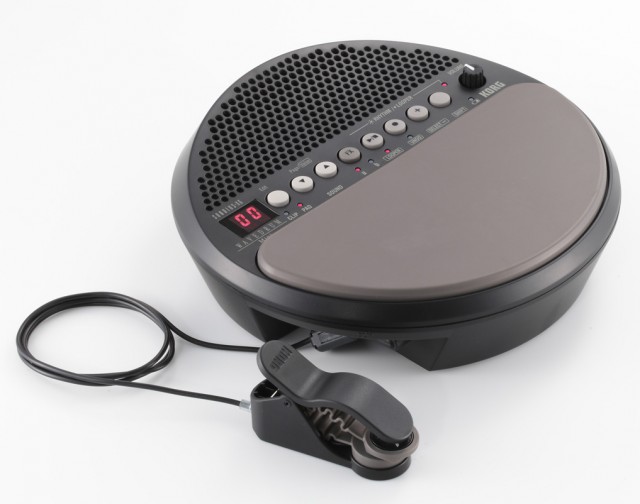Want to win over electronic sound geeks? Korg’s found a simple formula: give them a steady diet of compact, affordable, fun toys that can also be serious sound tools. And so, Korg actually manages to upstage some “bigger” tech announcements this week with some good, clean gear candy. Aside from the expected Monotribe, there’s the unexpected Wavedrum Mini.
You’ve probably already seen the Korg Monotribe, the follow-up to the stocking stuffer analog handheld, the Monotron. It’s been leaked and teased as the words “under strict embargo” have come to mean in the music tech blogosphere “publish as quickly as possible.”
If you just joined us, though, the Monotribe is best described as a Monotron with step sequencer, new control features, analog sync, and simple drum circuits.
Let me boil down some predictions about this instrument, due summer this year.
1. Price will be the deciding factor. Keep the street well under US$200, Korg, and it’ll be a blockbuster. Go above that, and we’ll have to start comparing it to a pretty broad variety of boutique instruments – oh, and lots of stuff on eBay, even from a company called Korg.
2. More evolved synth control, not drums, is the killer feature. Yes, there are “discrete analog” drum sounds, but since they’re fixed, that doesn’t mean much. (Leave that to the modders.) So, instead, see the synth side.
I love the Monotron’s sound, when combined with its deliciously-raucous LFO and classic MS-10 / MS-20 Korg analog filter. Revisiting Korg’s own filter circuit was a stroke of genius. Extend on that success with the Monotribe by adding step-sequencing and recording, and add different control modes (including the ability to hit actual notes on its tiny ribbon), and it all becomes more useful. I also like pushing the frequency range. There’s a double-edged sword here, too, though – by adding features, it’s apparent what’s missing. And as a synth, the Monotribe is pretty limited. It pales oddly versus the (affordable when introduced) Roland TB303; I’d hesitate to even make the comparison. (But see item #1, which overrides the rest.)
3. The design is a bit of a disappointment – but it could be more fun than a Monotron. The original Monotron was iconic and adorable, tiny enough to fit in your hand, dirt-cheap and simple enough to give to non-synth friends in place of wine. The new Monotribe is mostly utilitarian-looking, as if several units were cut and paste together, and with the extra bulk, you still don’t get niceties like, um, MIDI. But no matter: again, assuming they’ve got the price right, this appears to be a fun little busy box for synth addicts that can make most iOS apps look soulless by comparison.
4. Sync is more fun than you think. So, that sync jack will take an audio pulse. That means you could send this a click and sync to a DAW – or, I’d imagine, do some fun audio triggering with it. Hacks should therefore be really easy on the sync side. And it could wind up being sync that moves this into the must-buy category.
Demos:
It’ll be a fascinating test – can you take something ultra-minimal, make it a little less minimal, and have it still work?
And yes, it’s funny to hear the word “analog” turn into a “new” marketing buzzword.
Will people make whole albums with it? They will, indeed. Listen to Chris Randall tell CDM about putting the Monotron on EPs.
And a Mobile Drum
The Korg Wavedrum Mini is equally adorable. On the Wavedrum Mini, it’s easier to complain about absent MIDI output since it’d make a terrific little controller, but that’s about the only gripe so far. Again, the major unknown – and it could be the deciding factor – is price.
The Wavedrum Mini is otherwise an ultra-portable drum pad with speaker, and a “sensor clip” — I’m guessing just a trigger — that you can put on anything. There are built-in patterns and things, but let’s skip to the good parts.
It’s a win for:
1. Anyone who needs to play with batteries.
2. Anyone who needs something ultra-portable for practice (especially with the speaker and headphone jack).
3. Anyone wanting a fun toy to play with drum triggers, using that clip.
It’s just a shame the clip and pad can’t be used with MIDI or USB or Bluetooth or anything but audio. Makers, time for us to step in and offer a little DIY alternative, huh?
Due summer 2011.
Full disclosure: Create Digital Music produces and sells the competing MeeBlip. Okay, that was fun to say.

